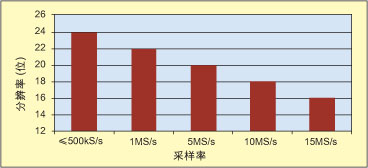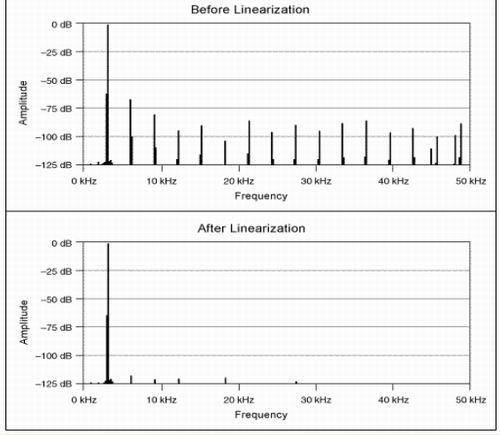The convergence of technologies enables system manufacturers to continuously meet user expectations, but it also puts tremendous pressure on developers and test engineers because they need to test more functions, and try to shorten test time and get products to market as soon as possible. . Virtual instruments can effectively integrate fast development software and highly flexible modular hardware to create user-defined test systems, making them an excellent test solution to overcome these challenges.
This article refers to the address: http://
Increasing consumer demand and expectations are driving manufacturers to develop new, more innovative products to maintain their competitive position and profitability. Telematics systems in automobiles are a classic example of a growing number of functions. A few years ago, the car was only equipped with a cassette player and an AM/FM radio. The disc then appeared and the car manufacturer immediately integrated the CD player with the standard AM/FM radio and cassette player in the car. Consumer demand and expectations are still improving, and it is now easy to see CD/MP3 players, DVD players, AM/FM and satellite radio, GPS and cellular phones in information processing systems. All of these technologies that were previously implemented by individual devices can now be incorporated into a mature and complex information processing system.

Figure 1. Key points on the frequency-resolution curve of the NI PXI-5922 multiresolution digitizer.
The convergence of technologies enables automakers to meet user expectations and build on a highly competitive market. But this puts tremendous pressure on both developers and test engineers because they need to test more features and minimize test time to meet time-to-market requirements.
Let us look at it from the perspective of the car manufacturer. Consider the cost of designing and developing an information processing system. A few years ago, designers might only need a traditional boxed instrument to design and test the limited functionality of the cassette player. However, in order to meet today's challenges, designers must purchase new instruments to complete testing of new features in telematics systems. As the test system continues to expand, not only does space start to be insufficient, but spending also exceeds budget. If you can replace all these expensive and varied instruments with an integrated test system, and define functions based on specific applications, how good is it to provide future expansion?
Today, virtual instruments have become the preferred test solution to overcome these challenges. It combines rapid development software with highly flexible modular hardware to create user-defined test systems. Virtual instruments provide: intuitive software tools for rapid test development; fast, accurate modular I/O based on innovative commercial technology; and a PC platform that delivers high accuracy and throughput with integrated synchronization.
Fast test development software
As automation becomes a fundamental requirement for rapid testing of complex products, software has become an essential part of all test systems, from design verification to highly automated manufacturing testing. In order to quickly provide a test system capable of testing new features, an integrated set of test development tools is required. These tools include test management, test development, and I/O drivers.

Figure 2. PX-5922 frequency-resolution curve compared to other digitizers at up to 15 MS/s sample rate.
Modular I/O
The second important test technology is modular I/O including technologies such as modular instrumentation and data capture. Modular I/O uses commercial chip technology to create low-cost, high-performance virtual instruments. The widespread adoption of widely used commercial technologies such as ADCs, DACs, FPGAs, and DSPs has rapidly enhanced modular I/O capabilities and performance. In many cases, the accuracy of virtual instruments exceeds the accuracy of traditional instruments.
PC-based test platform
All modern test systems include a PC. The PC is not only part of the test system, but is gradually becoming an important integration platform: the test system center. The wide availability of gigahertz processors, high-speed buses, software, ever-increasing performance and exceptionally low price make the PC an ideal test platform. If you look at the evolution of PC performance over the past 20 years, the only part of the test system that has the same level of performance improvement is the device under test itself.
General purpose instrument for dynamic testing
Assuming you are testing audio and wireless functions in an in-vehicle information processing system, the instruments required to perform audio and wireless testing are audio analyzers, RF downconverters, and IF digitizers. You can choose from 3 PXI or PCI modules and define the test system in software. It is obviously more beneficial if a device can be used for multiple purposes.

Figure 3. A pure sine wave FFT plot applied to a 6-bit delta-sigma ADC before and after linearization.
This can now be done using a universal instrument for dynamic measurements. National Instruments (NI)'s PXI-5922 multi-resolution digitizer is such a device that integrates multiple instrument functions into one module. With this digitizer, the user can adjust the sampling rate to achieve different resolutions. For example, at a sampling rate of 15 MS/s, the module can provide 16-bit resolution. After the sampling rate is reduced to 500 kS/s by software, the same module (without any changes to the hardware) will provide 24-bit resolution. In this example, the PXI-5992 general purpose instrument can be used as either a 24-bit audio analyzer or a 16-bit IF digitizer.
Just as the DMM integrates multiple DC measurement functions into one instrument, the PXI-5992 also improves AC measurement by providing multiple instrument functions in a single digitizer. New virtual instruments can be created using the digitizer and software such as LabVIEW8. Compared to many traditional instruments such as audio analyzers, spectrum analyzers, IF and I/Q baseband digitizers, DC and RMS voltmeters and frequency counters, this virtual instrument can achieve better measurement performance.
Innovative Flex II ADC multi-resolution technology
This innovative multi-resolution technology can be implemented with NI's Flex II ADC. The analog-to-digital converter uses an NI-designed, fully-customized analog ASIC, an enhanced delta-sigma converter that utilizes these two innovative techniques to achieve a particularly high dynamic range over a wide range of sampling rates: A 6-bit delta-sigma ADC replaces a single-bit delta-sigma ADC; it has a patented digital linearization mechanism.
Single-bit delta-sigma ADCs provide high resolution and high dynamic range for low frequency applications. However, due to the limited sampling speed, single-bit delta-sigma ADCs are not suitable for applications where the dynamic signal frequency exceeds several hundred KHz. Multi-bit delta-sigma ADCs provide high dynamic range at high frequencies and linearize to remove the nonlinearities inherent in multi-bit delta-sigma ADCs.

Figure 4. The high-end generator produces a very pure 10kHz sine wave FFT capture with noise levels as low as -170dB FS/Hz and SFDR as high as -120dBc.
How the nonlinearity in the ADC shown in Figure 3 behaves as a harmonic in the frequency domain. The Flex II ADC uses a powerful FPGA and linearization patented technology to digitally eliminate these nonlinearities and provide a wide dynamic range over a high sample rate range. The increase in dynamic range gives the user the ability to analyze signals that were previously mixed in the noise of traditional instruments.
The Flex II ADC is a great invention, but if an engineer can't integrate it into a digital instrument without sacrificing performance, then it won't work. The PXI-5922 multi-resolution digitizer features a state-of-the-art module front-end that leverages the performance of high-performance Flex II ADCs to unleash the efficient resources of a digital converter for powerful performance. This digitizer provides the highest resolution and maximum dynamic range on the market. Therefore, it can be used not only as a general-purpose instrument, but also to provide higher dynamic performance than the individual instruments it can replace. Figure 4 shows a very pure 10 kHz sine wave FFT capture from a high-end generator. The PXI-5922 has a noise density as low as -170dB FS/Hz, and the SFDR in this example can be as high as -120dBc.
Deposit Safe is a secure and protective cash storage container, which is widely used in stores and shops.
Details:
There is an opening for coins;
Deposit safe is anti-drilling, anti-burglar and anti-force;
Mechanical Lock + key, double protection is included;
Customization of design and sizes are available;
When the door is locked, money can only be put in but cannot be taken out unless with correct codes;
There is an emergency key for emergency situations .
Deposit Safe
High Security Burlary Safe Box,Safe Electronic Safe,Safe Deposit Lockers
YONGFA INTELLIGENT TECHNOLOGY SECURITY CO., LTD. , http://www.yongfa-safe.com
